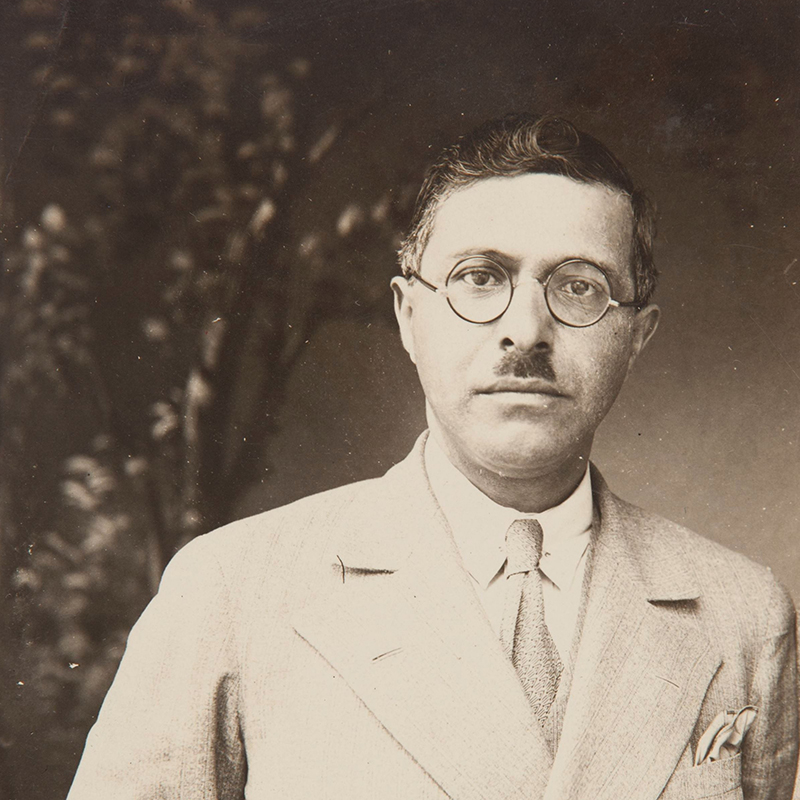AZİZ OGAN COLLECTION
Who is Aziz Ogan?

One of Turkey’s first archaeologists, Aziz Ogan, was born in İstanbul in 1888 as the son of Edremitli Hacı Halilzade Ahmed Bey. Ogan’s interest in archaeology dates back to his youth when he started to work as a museum official, a post to which he was appointed through the advice of a friend of his father’s, Osman Hamdi Bey, the director of İstanbul Archaeology Museum at the time. After graduating from the Academy of Fine Arts (Sanayi-i Nefise Mektebi), Ogan worked as an antiquities inspector at archaeological excavations in İzmir, Manisa and Aydın in order to deepen his understanding of archaeological knowledge. His achievements in these fields led to his appointment to the Inspectorship of İzmir Museum of Antiquities in 1914. The war prevented him from starting his duty and only after WWI, in 1918, Ogan started his duty at the İzmir Museum of Antiquities, and occupied this post successfully until 1931. Besides the construction and establishment of İzmir, Efes and Bergama museums, he played a significant role in the preservation of antiquities in this region. In 1931, he was appointed to the General Directorate of İstanbul Museums, where he worked until his retirement in 1954. Through the bulletin “Almanac of İstanbul Archaeology Museum”, which he started to publish internationally in 1934, Ogan introduced Turkish museums and developments in archaeology in Turkey to the world. He also attended the Turkish Pavilion at New York World’s Fair in 1939. He was actively involved in the process of the conversion of both Hagia Sophia into a museum and Tabhane Madrasa (which was a part of the Süleymaniye Complex) into the Turkish and Islamic Arts Museum. Ogan died in 1956.
What’s included in the collection?

This collection, donated to Boğaziçi University in 2003 by Hüseyin İnan, the grandson of Aziz Ogan, sheds light on the development of archaeology and museum studies in Turkey since the 1920s and renders it possible for researchers to trace the cultural politics of the early Republican period centered around pre-Islamic Anatolian civilizations. Besides biographical documents such as awards, invitations and greeting cards, the collection includes Ogan’s correspondence with the Ministry of Education, Turkish Historical Society, foreign museum officials, archaeological institutes and individual archaeologists. A substantial part of the collection is comprised of documents dating from his inspectorship days at the Museum of Antiquities in İzmir. Official documents, reports, guides and newspaper clippings pertaining to museums, excavation reports on Ephesus, Pergamum and Didim, writings on various Anatolian monuments as well as many photographs and glass negatives constitute some of the valuable materials included in the collection. The collection includes documents written in several languages, including Turkish, Ottoman Turkish, English, French and German.
